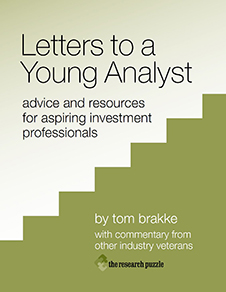
- Wednesday, April 22nd, 2009
- all gaussied up
-
In this period of dynamism, significant changes have occurred in the structure of some once-dominant market players (such as investment banks), other business models are being questioned (hedge funds), and even masters of sticky assets like mutual funds face real question marks about the nature of their operations going forward. Financial advisors are desperately trying to hang on to clients and find messages that resonate, and individual traders and investors are rethinking their approaches and assumptions.
We see “buy and hold” and other concepts that were held dear being cast aside and professional and amateur investors alike searching for themes and formulas that fit the not-so-brave new world. A pervasive question is what to do about one foundational precept in particular, the normal (or Gaussian) distribution.JMG Galleries | Regular readers know that I try to put in little drawings now and again. I found that making something symmetrical and curvy is way beyond my skill level. For a reference to the shape, look at this great photo. It is hard to overestimate its reach in investment decision making.
There are those, most famously Nassim Nicholas Taleb, who have told us that analytically clinging to the normal distribution is foolhardy. (Not one to hold back, he titled Chapter Fifteen of The Black Swan “The Bell Curve, That Great Intellectual Fraud.”) Since it has been the bedrock of almost all financial planning tools and techniques used by the masses — and a great many of the quantitative methods employed by investment professionals — a fall from grace for the Gaussian approach would have enormous ramifications for the structure of the investment business. The events of the last couple of years have played into Taleb’s hands and brought the debate front and center.
While artfully acknowledging some of Taleb’s points, Eugene Fama and Kenneth French challenge the extent to which he applies them, with French indicating that it is inaccurate to say that “the existence of outliers undermines modern portfolio theory or asset pricing theory.”Dimensional Fund Advisors | The Q&As in the “Fama/French Forum” provide a regular diet of topics to consider. It’s a good format and even if I don’t always agree with the answers they provide I find them of interest. You know if you get heavy hitters like Taleb and Fama/French in such a debate it will get theological in a hurry.
In practical terms, I have always found it better to actively question everything and to learn from everyone who is thoughtfully addressing an issue. While people are quick to declare “right” and “wrong” in the market (often before the jury is really in), the world is more nuanced and changeable than absolutists believe.the research puzzle | We played upon this ground in “painting your face.”
The pendulum has been fixed on the side of “the normal” for too long, thus explaining the somewhat violent reaction in the other direction in response to market realities (and the concomitant rise of celebrity for Taleb). However, it is no more wise to toss out the old beliefs entirely than it was to have not been aware of the potential shortcomings in them all along. Scholars and practitioners alike should affix warning labels to their analyses that indicate the degree to which the theoretical assumptions used are shortcuts that may or may not be as explanatory or predictive as we assume. The answer is not to cast aside the pervasive and familiar statistical tools, but to use them more wisely and in combination with others that present a richer, albeit more complex, look.
